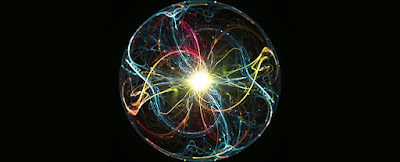THE BIG BANG
All of the Friedmann solution have the features that at some time in the past, between ten and twenty thousand millions years ago, the distance between neighbouring galaxies must have been zero. At that time, which we call the big bang, the density of the universe and the curvature of space time would have been infinite.
This means that the general theory of relativity- on whic Friedmann's solutions are based- predicts that there is a sigular point in the universe.
All our theories of science are formulated on the assumption that space-time is smooth and nearly flat, so they would all break down at the big bang singu-larity, where the curvature of space-time is infinite.
This means that even ifthere were events before the big bang, one could not use them to determine what would happen afterword, because predictability would break down at the big bang.
Corresponding, if we could not determine what happened beforehand. As far as we are concerned, events before the big bang can have no cosequences, so they should not form part of a scientific model of the unioverse.
We should therefore cut them out of the model and say that time had a beginning at the big bang.
Many people do not like the idea that time has a beginning, probably because it smacks of divine intervention.(The Catholic church, on the other hand, had seized on the big bang model and in 1951 officially pronounced it ti be in accordance with the Bible.)
There were a number of attempts to avoid the conclusion that there had been a big bang. The proposal that gainedd widest support was called the Steady state theory.It was suggested in 1948 by two refugees fromNazi-occupied Austria,Hermannn Bondi and Thomas Gold, together with the Briton Fred Holey, who had worked with them on the developmet of radar during the war. The idea that as the galaxies moved away from each other, new from new matter that was being continually created. The universe would therefore look roughly the same at all times as well as at all points of space.
The steady state theory required a modification of general relativity to allow for the continual creation of matter, but the rate that wads involved wads so low- about one particle per cubic kilometer per year- that it was not in conflict with experiment. The theory was a good scientific theory, in the sense that it was simple and it made definite predictions was that the number of galaxies or similar object in any given volume of space should be the same wherever and whenever we look in the universe.
This could have meant that we were at the centre of a great region in the universe in which the sources were fewer than elsewhere. Alternatively, it could have meant that the sources were more numerous in the past, at the time that radio waves left on their journey to us, than they are now.





Comments
Post a Comment